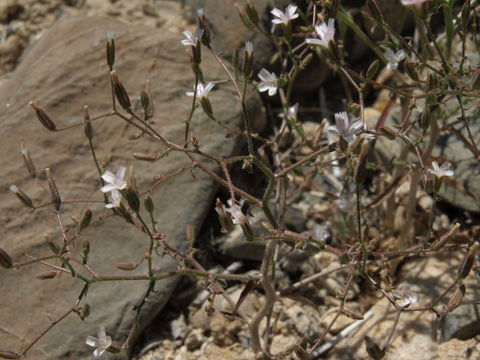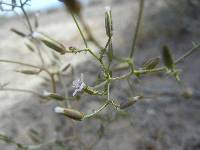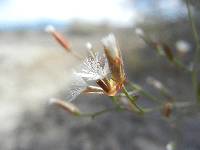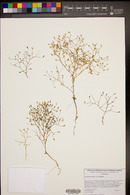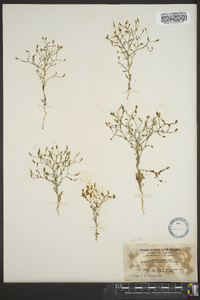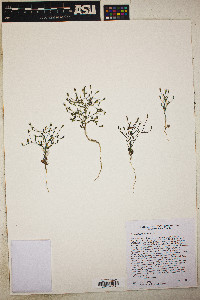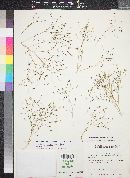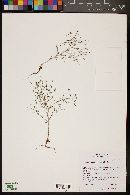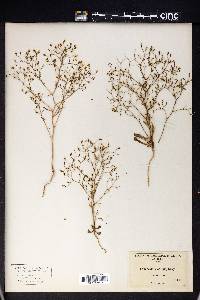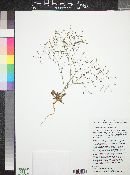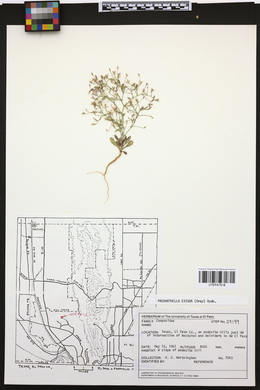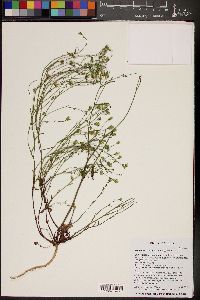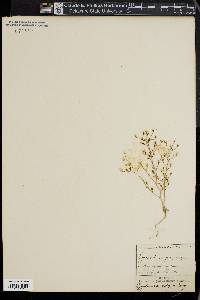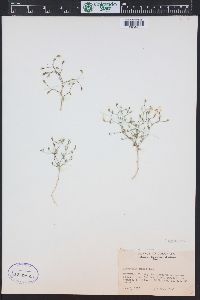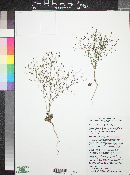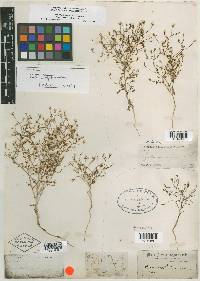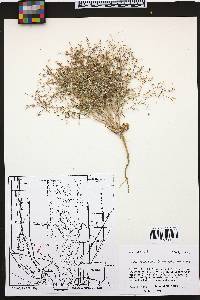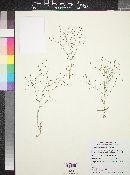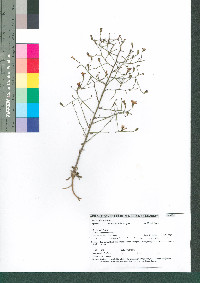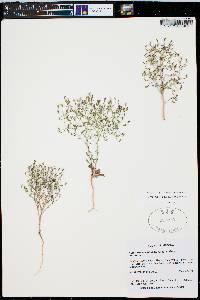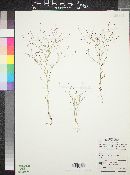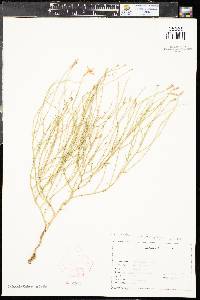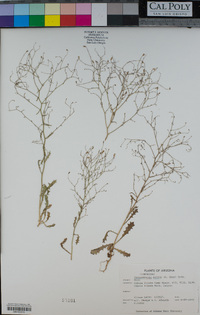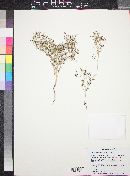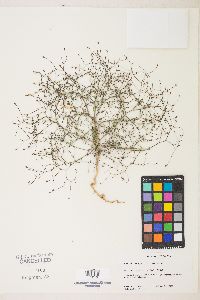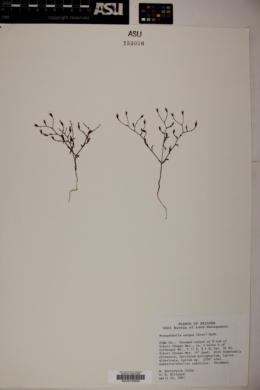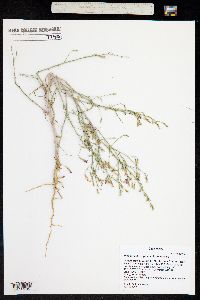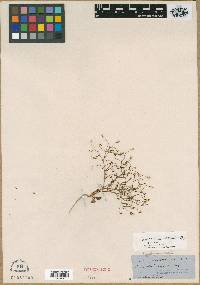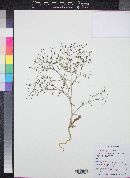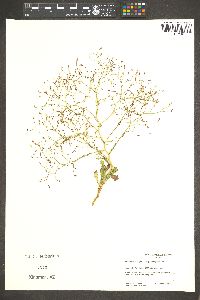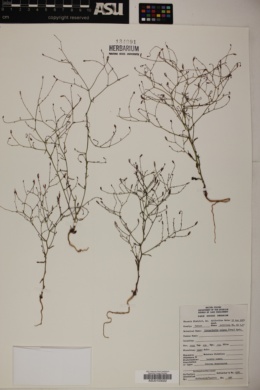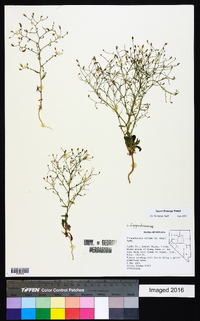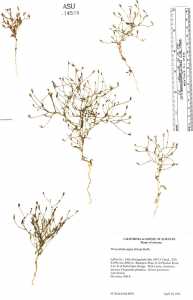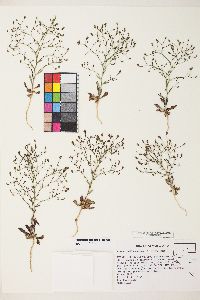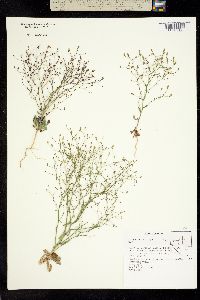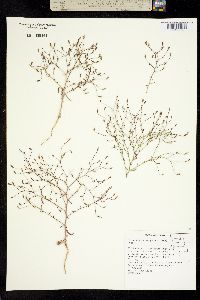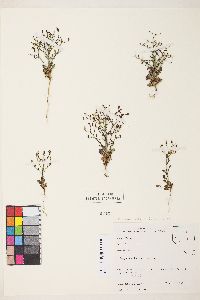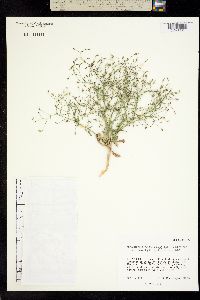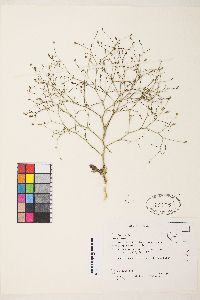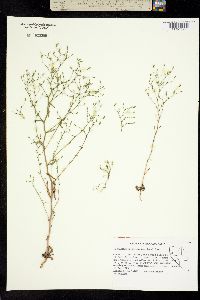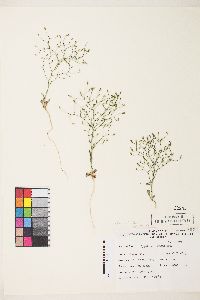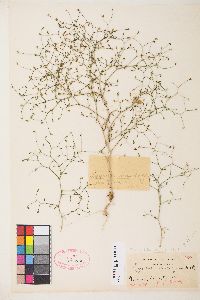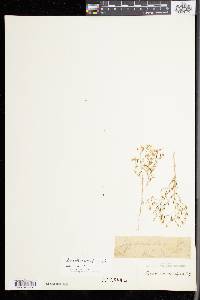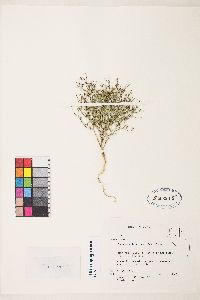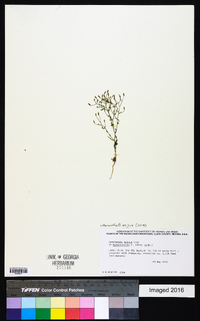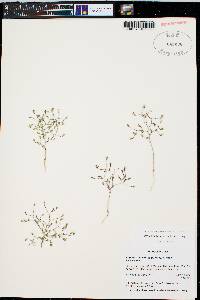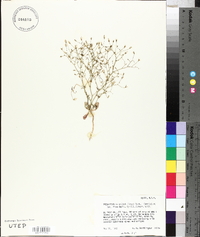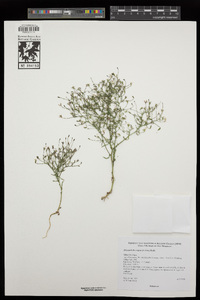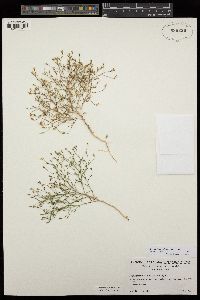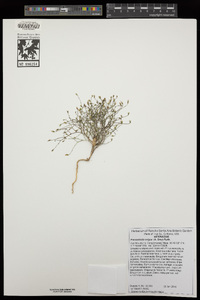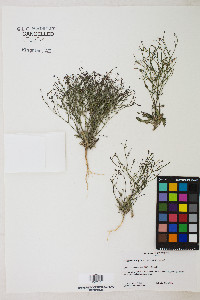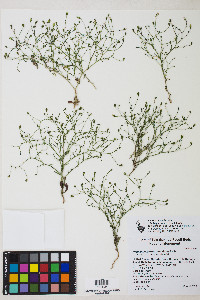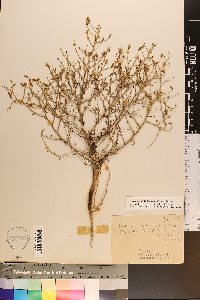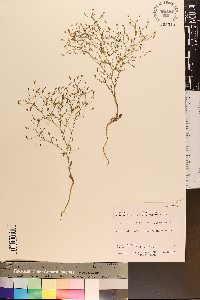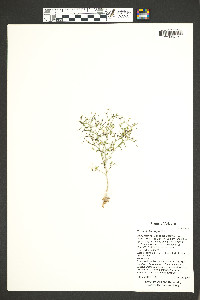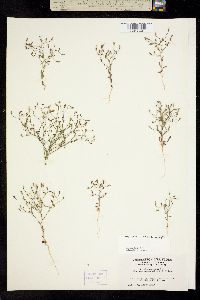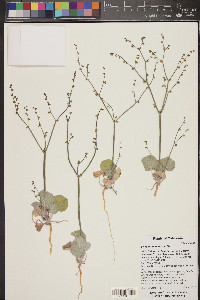Prenanthella exigua
|
|
|
|
Family: Asteraceae
Brightwhite, more...feeble prenanthela
[Lygodesmia exigua (A. Gray) A. Gray, morePrenanthes exigua A.Gray] |
Leaves 1-3 cm, reduced distally to bracts 0.5-5 mm. Heads 10-150+. Calyculus bractlets 0.5-1+ mm. Principal phyllaries 3-5 mm after flowering. Corollas 1.5-2 mm. Cypselae 2.5-3.5 mm; pappi: longest bristles 2-3 mm. 2n = 14. Flowering Mar-Jun. Sandy, gravelly, or clay soils, desert washes and open slopes to sagebrush-juniper steppes; 20-1900 m; Ariz., Calif., Colo., Nev., Oreg., Tex., Utah; Mexico (Baja California, Sonora). FNA 2006, Jepson 2012, Kearney and Peebles 1969, McDougall 1973 Duration: Perennial Nativity: Native Lifeform: Forb/Herb General: Herbaceous annuals to perennials, to 30 cm tall, stems unarmed, 1-5 or more, slender, erect, leafy proximally and often flexuous distally, much-branched, branching near bases or distally, herbage glandular-puberulent to glabrescent, plants taprooted and with milky sap. Leaves: Opposite or alternate, those of the stem reduced and inconspicuous, spatulate to obovate or oblanceolate, often runcinate, 1-3 cm, becoming reduced distally to scale-like bracts 0.5-5 mm long, margins irregularly wavy (repand), dentate to lobed, teeth often minutely spine-tipped, faces glabrous, blades sessile or petiolate. Flowers: Pink or white in heads with ray (ligulate) flowers only, these in clusters of 3-6 florets, corollas 1.5-2 mm long, ligules to about 5 mm long, rather deeply lobed, involucres ovoid to cylindric at flowering, to 5 mm tall and 2-3 mm diameter, phyllaries linear-lanceolate, equal, herbaceous, 3-5 in 1 series, with hayline margins and acute apices, receptacles flat, glabrous and smooth with scars, epaleate, calyculi of 2-3, minute, deltate, unequal bractlets, heads liguliflorous, many, in open, intricately-branched, panicle-like clusters, peduncles flexuous, minutely bracteate, borne at branch tips. Fruits: Cypselae (achenes) columnar, pale brown, 2.5-4 mm long, 5-ribbed and grooved, tapering slightly proximally, not beaked, surfaces glabrous and minutely wrinkled. Pappi of 80 or more stiff, white, unequal bristles, longest bristles 2-3 mm long, these basall Ecology: Found on sandy, gravelly, or clay soils, in desert washes and open slopes to sagebrush-juniper steppes, from 50-6,500 ft (15-1981 m); flowering March-June. Distribution: Arizona, California, Colorado, Nevada, Oregon, Texas, Utah; Mexico. Notes: There is only this one species in the United States, found in the southwest and in northwestern Mexico. These little cuties are small and delicate, with diffuse, intricate branching, and relatively large, prismatic, presistent heads, this species may be mistaken for a member of the chenopodiaceae at first glance. The petioles of the leaf blades also seem to be fairly persistent, resembling nodes along the lengths of the stems. Look for this plant under Lygodesmia exigua in older texts. The keys to this species are the unarmed branches and the obovate or oblanceolate leaves (if the leaves are grass-like, see Lygodesmia grandiflora.) Ethnobotany: Unknown. Synonyms: Lygodesmia exigua, Prenanthes exigua Editor: LCrumbacher2012 Etymology: Prenanthella is a Latin diminutive of Prenanthes, which is derived from the Greek prenes, "prone, prostrate, with face downward," and anthos, "flower", while exigua means little, poor in growth, or weak. |

